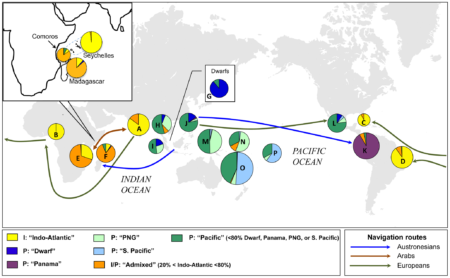An important announcement from Danny Hunter and Michael Halewood of Bioversity.
Since publication of the first book back in 2010 the ‘Issues in Agricultural Biodiversity’ series has grown steadily. We continue to receive encouraging feedback and it is clear that for many in the agrobiodiversity community it is one of the ‘go to’ sources for information. As we move into 2017, we now have our tenth book title in the pipeline and we are hopeful it will be published later in the year to mark this landmark achievement. Ten titles in any book series is a reasonable achievement. But we don’t want to stop there. We want for the series to continue to grow and especially to expand its scope to other still neglected (from the series perspective) elements of agrobiodiversity, including new titles which demonstrate and explore more interdisciplinary and cross-sectoral approaches to the topic and which have much resonance in the 2030 agenda for sustainable development.
The series is a partnership between Bioversity International and Earthscan from Routledge. One of the advantages of publishing in the series through this partnership is we have an agreement that all books become freely available and open access after 9 months in hard copy.
With the beginning of a new year we would like to renew our call for new proposals. We are interested in proposals which address gaps in the current list of titles and are innovative in scope. These could address the following topics but we are open to all relevant and reasonable suggestions:
- Agrobiodiversity and climate change
- Agrobiodiversity and nutrition-sensitive agriculture interventions
- Wild foods, seasonality and food security
- Livestock and animal genetic resources
- Fish, aquatic genetic resources
- Soil biodiversity
- Forests and tree genetic resources and non-timber forest products
- Diverse agricultural systems, biodiversity and ecosystem services
- Indigenous Peoples/Indigenous knowledge systems and agricultural biodiversity
- Agrobiodiversity, human health and wellbeing
- Agrobiodiversity, policy, access and benefit sharing
- Promoting diversity in food systems: Interdisciplinary and cross sectoral approaches
- Biodiversity, food cultures, gastronomy movements and sustainable food tourism
- Diversifying food procurement and school feeding, sustainable and healthy food sourcing
- Agrobiodiversity and sustainable consumption
- Markets for diverse species
- Agrobiodiversity and short supply chains
- Innovative planning and policies for agrobiodiversity-rich sustainable food systems
- Gender and agricultural biodiversity
- Urban-rural, city-regions and the role of agricultural biodiversity
- Agrobiodiversity and integrated landscape approaches
We warmly welcome your suggestions. If you have any questions just drop us a line. Finally, please do share this call as widely as possibly with your networks, colleagues and friends.
For anyone seeking further information please contact Danny Hunter (d_DOT_hunter_AT_cgiar_DOT_org) or Michael Halewood (m_DOT_halewood_AT_cgiar_DOT_org) at Bioversity International.
